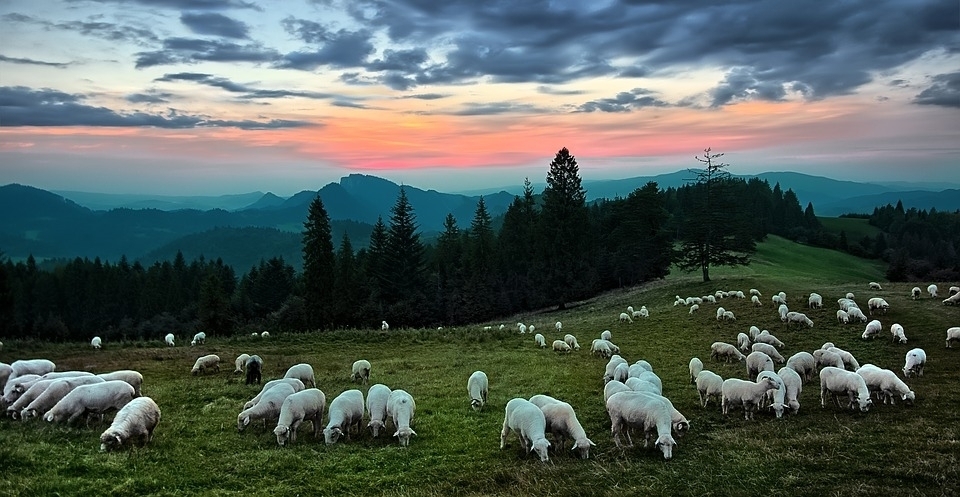Match.Graze is a free online platform that connects livestock producers and landowners throughout the state of California. Whether you’re a landowner seeking a small flock of sheep to mow your back 40, or a producer in search of seasonal pasture for a goat herd, Match.Graze can help you pair up with the animals or land base that you need! The Match.Graze map displays pertinent data from individuals that have voluntarily submitted information to the database, such as acreage or animal type available, forage characteristics, approximate location, and contact information. Search the map to find an answer to your personal grazing needs. With this service, University of California Cooperative Extension (UCCE) aims to support the expanded use of grazing to achieve California’s collective habitat enhancement and fuels reduction goals.
A Guide to Livestock Leases for Annual Rangelands a UCANR publication Feb 2020.
Definitions of Forage Types:
Cover Crop – Cover crops are grasses, legumes, and other forbs that are planted for erosion control, improving soil structure, moisture, and nutrient content, increasing beneficial soil biota, suppressing weeds, providing habitat for beneficial predatory insects, facilitating crop pollinators, providing wildlife habitat, and as forage for farm animals.
Crop Residue – Crop residues are materials left in an agricultural field after the crop has been harvested. These residues include stalks and stubble, leaves, and seed pods.
Pasture – Pasture is defined as an area enclosed for growing forage and allowing animals to graze. Ranchers intensively maintain the health and productivity of their pastures through management practices including grazing, seeding, tillage, fertilization, mowing, weed control and irrigation.
Rangeland – Lands on which the native vegetation is predominantly grasses, grass-like plants, forbs, or shrubs suitable for grazing or browsing use. Rangelands include natural grassland, savannas, many wetlands, some deserts, tundra, and certain forb and shrub communities. Rangeland is less intensively managed than pastures, typically supports more native species, can be open (not enclosed by fencing) and can be grazed by wildlife or livestock.
Definitions of Grazing Tiers:
Tier 1: Community / Neighborhood Grazing
Community grazing involves small-scale livestock grazers using their animals to graze a community of small-scale property owners. These property owners range from ¼ acre to several acres; animals graze one parcel then are moved to a neighboring parcel. Having a grazing operation in the community increases community safety by grazing to reduce fire fuels on multiple properties. Community grazing can also:
- Provide internships to young, local people interested in contract grazing or meat/wool business.
- Lower carbon footprints by way of eliminating the need to transport animals long distances via truck and trailer, and reducing the use of petrochemicals and synthetic herbicides.
Tier 2: Contract / Targeted Grazing
Contract or targeted grazing is the application of a specific kind of livestock at a determined season, duration, and intensity to accomplish defined vegetation or landscape goals. The major difference between targeted grazing and traditional grazing management is that targeted grazing refocuses outputs of grazing from livestock production to vegetation and landscape enhancement. In the case of contract/targeted grazing, the landowner must have a clear vision of their desired goals regarding plant community and landscape, and the livestock grazer must have the skill to graze the livestock in a way that accomplishes those goals.
Contract/target grazing contractors often provide all necessary infrastructure (fencing, livestock water, predator protection, etc.); however, there are a variety of factors that impact the cost of a particular targeted grazing project. These include:
- Relative ease (or difficulty) of setting up infrastructure, including loading and unloading facilities.
- Projects in steep or difficult-to-access terrain require more labor and are therefore typically costlier.
- Access to livestock water; livestock grazers may need to haul water to the livestock.
- Risks, like vandalism, toxic plants, or proximity to high-value landscaping may increase the cost.
- Headache factors – like free-roaming pet dogs or neighbors who object to livestock or livestock guardian dogs – can increase the cost of a project.
Tier 3: Traditional Grazing: land leased on an annual or long-term basis
Traditional grazers are livestock producers that own cattle, sheep and/or goats that are managed year round on owned and/or rented properties – these grazers are interested in fulfilling their production goals. If they do not own grazing land, these livestock producers need to rent land for their animals to graze on. If a property is suitable for seasonal or continuous grazing, but the landowner lacks knowledge or desire to manage a grazing operation, leasing the land to a traditional grazer can be a good option. Rental fees are usually based on a per animal or per acre basis. Traditional grazers have the ability to haul their animals in and out of the leased property. If a property lacks infrastructure, a property owner and grazer can work together to install the necessary infrastructure to allow for grazing. These types of arrangements are best achieved by establishing a long-term lease and/or agreement – ensuring that both party’s needs and expectations are defined. Leasing lands for grazing can result in:
- A more cost-effective alternative for reducing fine and ladder fuels over large and rugged landscapes that may be inaccessible for equipment or hand crews.
- Income received from the grazing lease.
About Match.Graze:
Originally created by the South Dakota Soil Health Coalition through a grant with the USDA Natural Resources Conservation Service, the version you see here has been adapted to California. Match.Graze for California was partially funded by a grant from Rebuild Northbay Foundation.
Interested in bringing this program to your state? View this flyer and contact SDSoilHealth@gmail.com

Pixabay free download, Sheep in Meadow – Sunset by JerzyGorecki.
